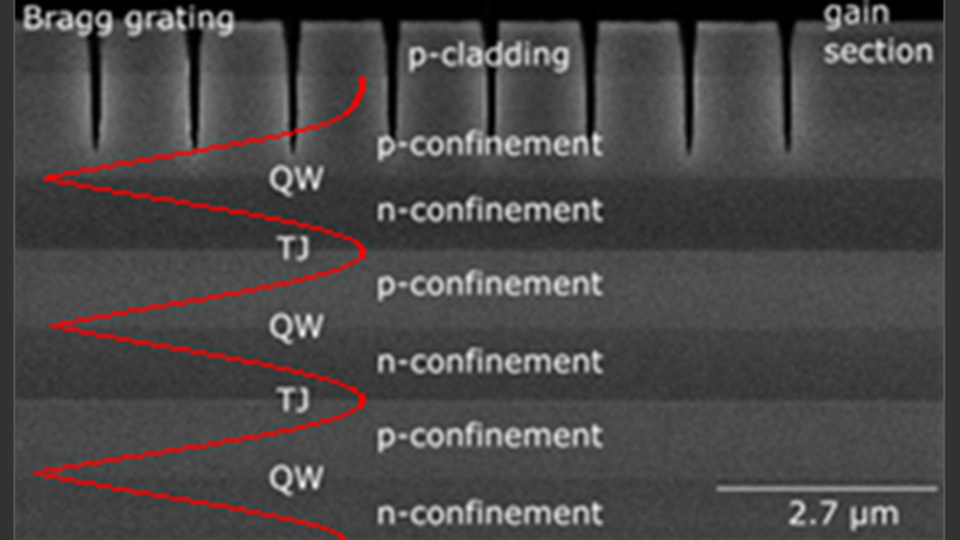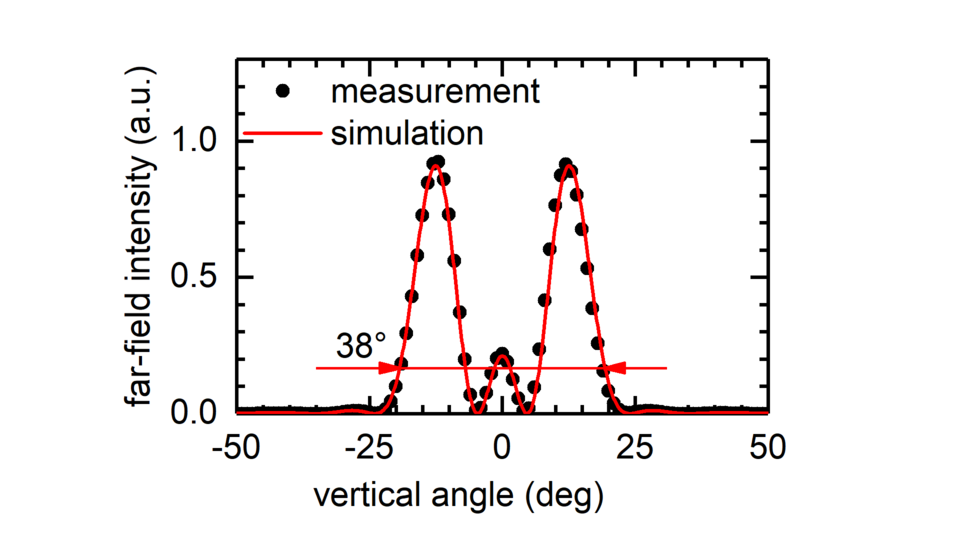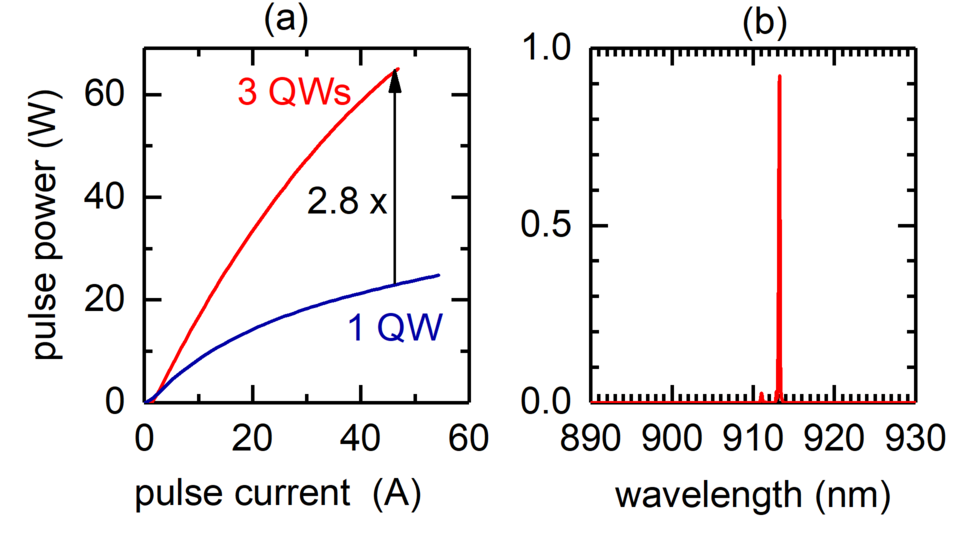Wavelength stabilized diode lasers with epitaxially-stacked multiple active regions and tunnel junctions for LiDAR applications
Fig. 1: SEM picture of the DBR laser with active quantum wells, tunnel junctions and surface grating with superimposed mode profile (red).
Lasers generating short optical pulses in the ns range are key components for Light Detection and Ranging (LiDAR), free-space communication, spectroscopy, metrology, and material processing. In order to reduce the high currents needed to achieve high peak powers, several laser diodes separated by tunnel junctions can be monolithically stacked in series. In the ideal case, the slope efficiencies of such nanostack lasers are proportional to the number N of diodes. Thus, far above threshold, the optical power is increased by a factor of N compared to single diodes at the same injection current, at the expense of a correspondingly increased voltage.
Instead of stacking individual laser diodes, it is also possible to epitaxially stack several active regions in the GaAs-based diode lasers, alternating with tunnel junctions in a single waveguide core. It is advantageous to utilize a higher order vertical mode, placing tunnel junctions and active regions into its nodes and antinodes, respectively. This minimizes the impact of the strong absorption, which results from the highly doped tunnel junctions, and maximizes the modal gain. The concept enables to implement a surface Bragg grating for wavelength stabilization, needed to improve the signal-to-noise ratio in LiDAR systems for autonomous driving.
For the first time ever, FBH has succeeded in fabricating such a distributed Bragg reflector (DBR) laser utilizing two tunnel junctions and three active regions (Fig. 1). The lasing of the 3rd vertical mode was confirmed by comparing measured and simulated far field profiles (Fig. 2). An almost three-fold increase of the optical power compared to a DBR laser with a single active region was demonstrated under operation with nanosecond current pulses (Fig. 3a). The narrow optical spectrum with a peak wavelength near 910 nm reveals the effect of the 7th order surface Bragg grating (Fig. 3b).
This work was supported by the Research Fab Microelectronics Germany (FMD) under Ref. 16FMDQ2 and the German Federal Ministry of Education and Research (BMBF) grant 13N15566 as part of WiVoPro.
Publications
H. Wenzel, A. Maaßdorf, C. Zink, D. Martin, M. Weyers, A. Knigge: “Novel 900 nm diode lasers with epitaxially stacked multiple active regions and tunnel junctions”, Electron. Lett. 57, 445-447 (2021)
H. Wenzel, J. Fricke, A. Maaßdorf, N. Ammouri, C. Zink, D. Martin, A. Knigge: “Internally wavelength stabilized 910 nm diode lasers with epitaxially-stacked multiple active regions and tunnel junction”, Electron. Lett., accepted.


